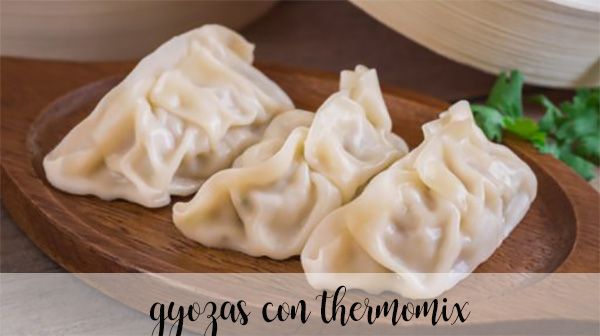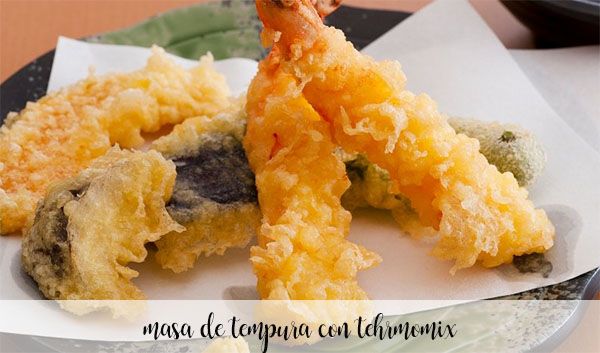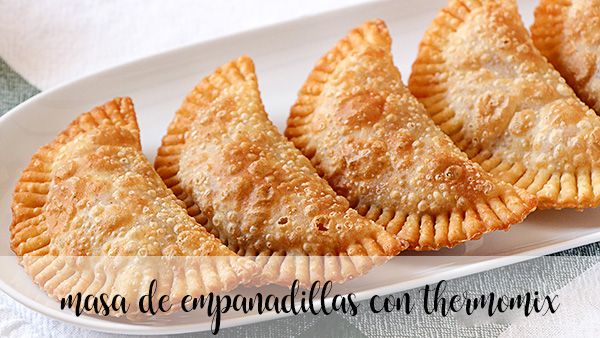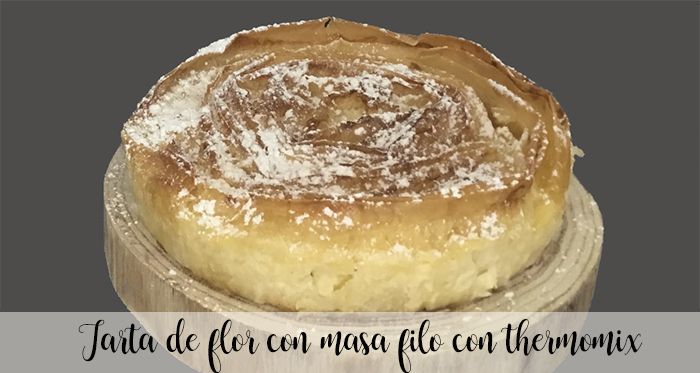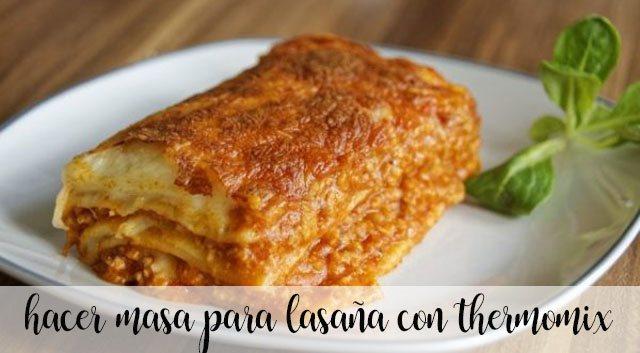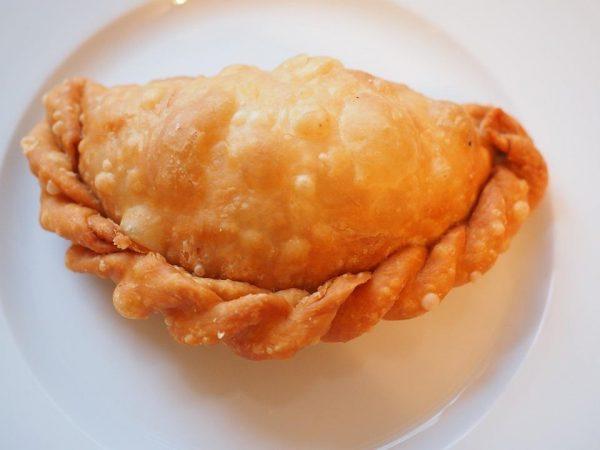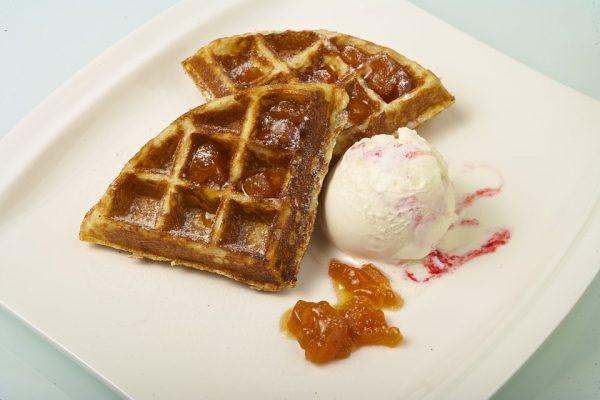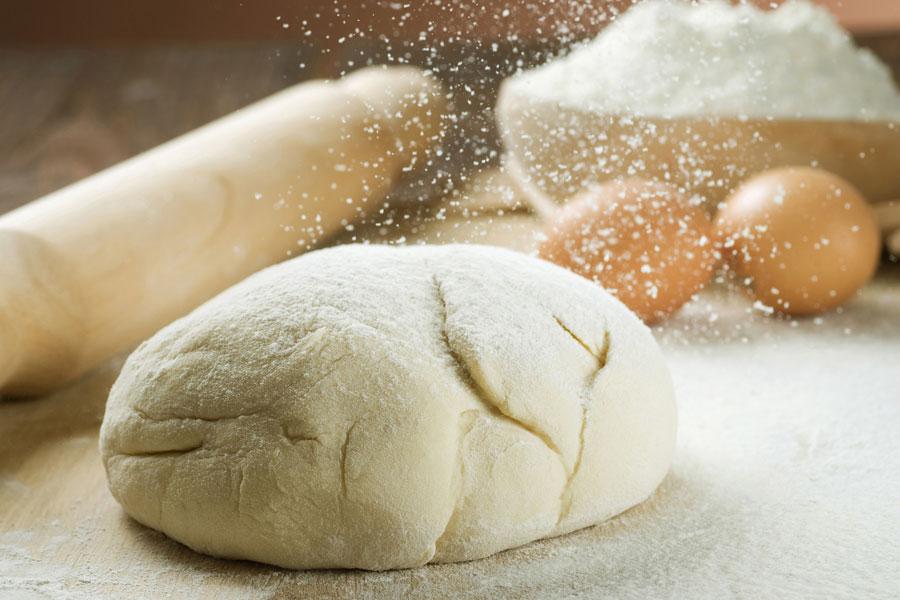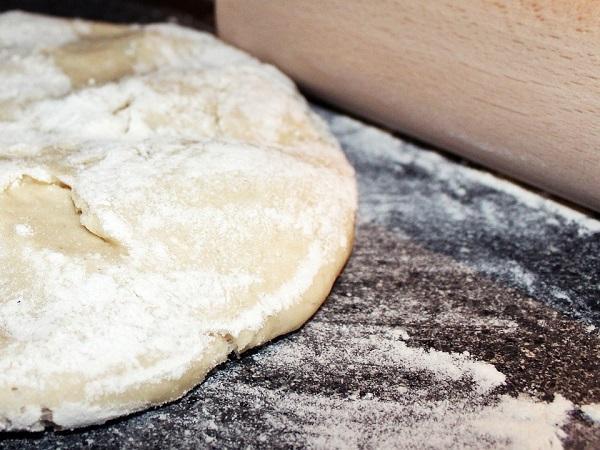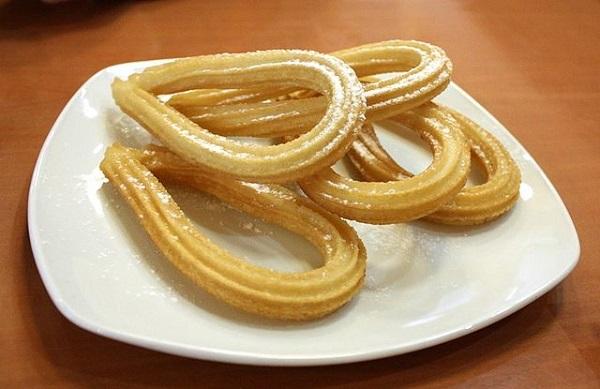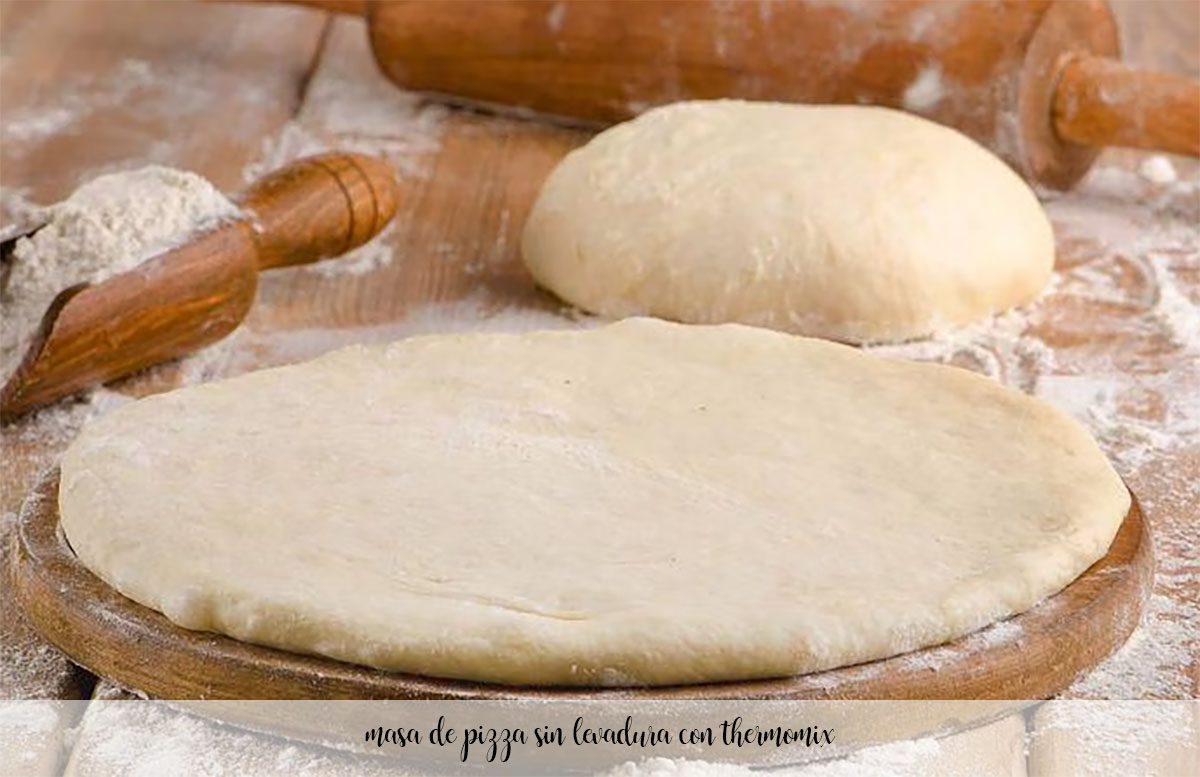Learn how to prepare the perfect dough to make delicious gyozas in your Thermomix. This recipe gives you a soft and elastic texture that will become the ideal base for your favorite fillings.
Follow these detailed steps for delicious results.
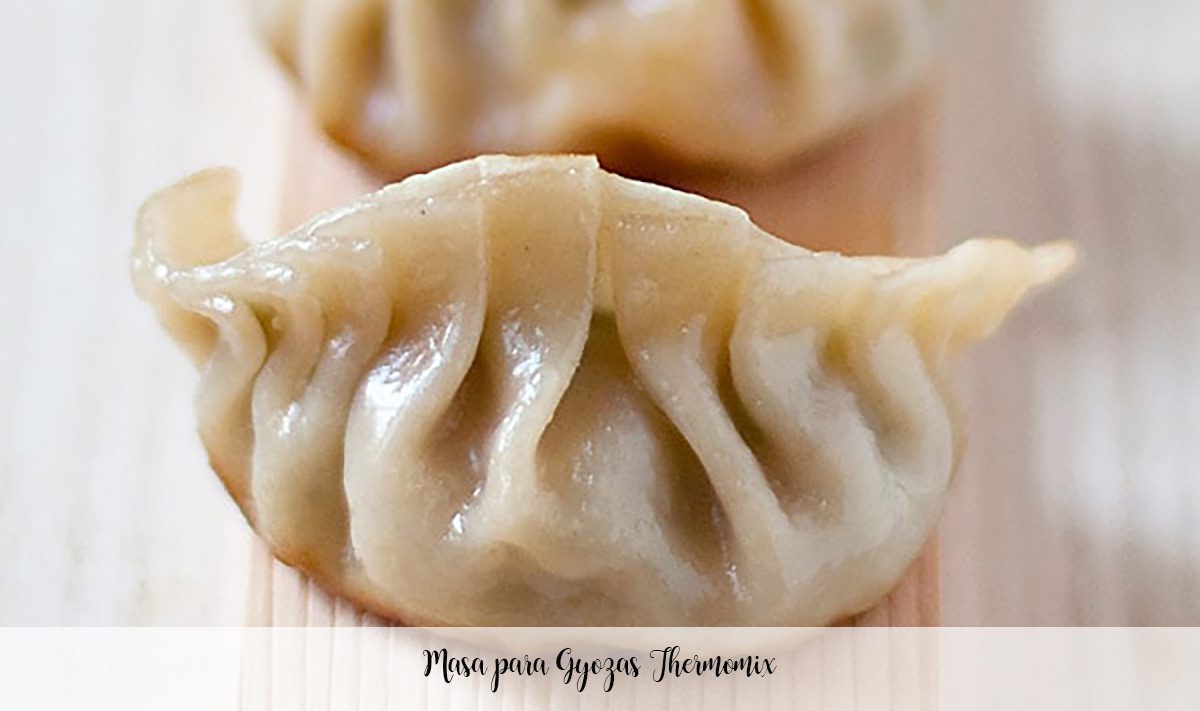
Dough for Gyozas Thermomix
Dough for Gyozas Thermomix
People
4
Cooking time:
30 minutes
Total Time
30 minutes
Kitchen
Spanish Cuisine
Spanish Cuisine
Category:
Snacks with Thermomix
Dough Ingredients for Thermomix Gyozas
- 300 g of wheat flour
- 150 ml of hot water
- 1/2 teaspoon salt
Preparation of Dough for Gyozas Thermomix
- Prepare the dough: In the Thermomix glass, place the wheat flour and salt. mix during
- *5 seconds / speed 5 *
- to evenly distribute dry ingredients.
- Add the hot water:
- With the Thermomix running at speed 3
- Slowly pour the hot water through the bocal. Continue mixing until the ingredients are combined and a ball of dough is formed. This will take approximately **20 seconds**.
- Knead the dough: Stop the Thermomix and knead the dough for **2 minutes**. To do this, select the kneading function and let the machine do the work. The dough should become smooth and elastic.
- Rest of the dough: Remove the dough from the Thermomix glass and form a ball. Cover the dough with a damp cloth and let it rest for
- 30 minutes at room temperature.
- This will allow the ingredients to hydrate properly and the dough is easier to handle.
- Roll out the dough: After resting, lightly sprinkle flour on a clean work surface. Divide the dough into small portions and roll them out with a rolling pin into thin, thin circles. If the dough sticks to the rolling pin, sprinkle in more flour.
- Filling the gyozas: Place a teaspoon of the filling of your choice in the center of each circle of dough. Then, lightly moisten the edges of the dough with water using a brush or your fingers. Fold the dough in half and press the edges to seal, making sure there is no air trapped inside.
- Cook the gyozas: Heat a nonstick skillet over medium-high heat. Add a little oil and place the gyozas in the pan seared side up. Cook for **2 minutes** or until golden brown on the bottom.
- Add **100 ml** of water to the pan and immediately cover with a lid. Reduce the heat to medium-low and cook the gyozas for 5 minutes or until the water has completely evaporated and the gyozas are steamed.
- Once the gyozas are cooked, carefully remove them from the pan and serve hot. You can accompany them with soy sauce or a dip sauce of your choice.
Additional tips:
- You can make a large batch of dough and freeze the extra gyozas to enjoy later. Just place them on a separate tray and put them in the freezer until they are firm. Then, transfer them to a freezer bag for long-term storage.
- If you prefer a thinner dough, you can adjust the amount of flour and water. Add more water for a softer dough or more flour for a firmer dough.
- Experiment with different fillings, such as pork, chicken, shrimp, or vegetables, to create a variety of flavorful gyozas.
What is the difference between gyozas and dumplings?
- Gyozas and dumplings are two popular dishes in Asian cuisine that share some similarities but also have distinctive differences. Next, I explain the main differences between them:
- Origin and region: Gyozas originate from Japan, while dumplings originate from China. Both dishes have become popular all over the world and have been adapted to different styles and flavors depending on the region.
- Wrapper and shape: Gyozas have a thinner wrapper and are usually made with wheat dough. They have a flatter and rounder shape, with folds on only one side. On the other hand, dumplings have a thicker casing and can be made from wheat dough or rice dough. They have a more rounded shape and fold into a crescent shape or are completely sealed.
- Cooking: Gyozas are usually cooked by a combination of frying and then steaming. They are browned in a pan with a little oil and then water is added to steam them and ensure that the filling is juicy. Instead, dumplings can be cooked in a variety of ways, such as boiled, steamed, fried, or baked, depending on the recipe and culinary preference.
- Fillings and Flavors: Both gyozas and dumplings can have a variety of fillings. Japanese gyozas are usually filled with a mixture of pork, cabbage, garlic, ginger, and seasonings. Chinese dumplings can have a wide range of fillings, such as pork, chicken, shrimp, vegetables, or a combination of these. The flavors of the fillings may vary depending on the region and personal preferences.
- In summary, although gyozas and dumplings share some similar characteristics, such as stuffed casing, shape, and cooking, there are notable differences in origin, casing shape, cooking methods, and fillings used. Both dishes are delicious and can be enjoyed in different culinary styles, offering a unique experience of Asian cuisine flavors.
What can the gyozas be filled with?
- Gyozas can be filled with a variety of ingredients based on individual preferences and dietary restrictions. Here are some popular options for the gyoza filling:
- Pork: The classic filling for gyozas includes minced pork, cabbage, garlic, ginger, chives, and seasonings such as soy sauce and sesame oil. This combination provides a tasty and juicy flavor.
- Chicken: You can use ground chicken instead of pork for a lighter option. Add vegetables like chives, grated carrots, mushrooms, and seasonings like soy sauce and ginger to enhance the flavor.
- Shrimp: If you prefer seafood, chopped shrimp is a great filling option for gyozas. Combine them with green onion, garlic, ginger and a touch of soy sauce to bring out their flavor.
- Vegetarian: For vegetarian or vegan options, you can use a mixture of finely chopped vegetables, such as cabbage, carrots, mushrooms, onion, spinach, and ginger. Add soy sauce or tamari for flavor.
- Combination of meat and vegetables: You can also combine meat and vegetables in the filling of the gyozas. For example, a mixture of pork with cabbage, shredded carrots, mushrooms, and chives creates a balanced texture and flavor.
- Remember that you can adjust the ingredients and proportions according to your personal taste. Plus, you can add other seasonings and spices to customize the flavor of your gyozas. Experiment and enjoy different filling combinations to create your delicious homemade gyozas!
